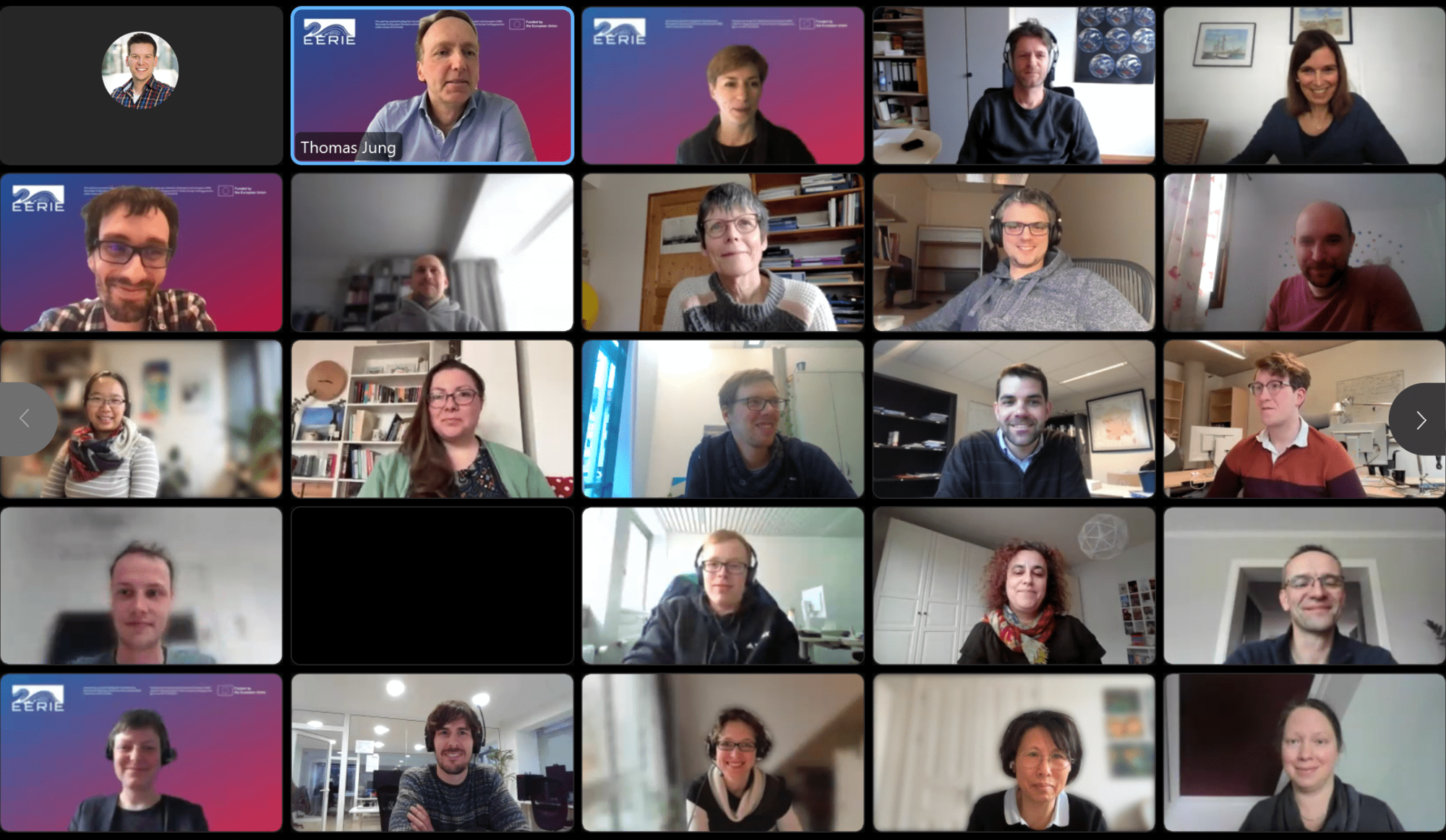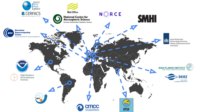The European Eddy-Rich Earth System Models (EERIE) project kicked-off on 23rd February 2023 with the aim to produce more reliable climate simulations and projections to 2100 by including realistic representations of the ocean mesoscale together with atmospheric weather and climate extremes.
Climate models such as these are very expensive to run, so EERIE also aims to achieve breakthroughs in optimisation and workflows in order to obtain key climate information much more efficiently.
This will result in more accurate and reliable climate change projections (especially at regional level) generated at a lower-energy consumption rate and at a faster pace – a simulation speed of 5 simulated years per day and a reduction of 50% in power consumption are among the top goals in EERIE.
“The overarching goal is to reveal and quantify the role of ocean mesoscale processes –the ocean weather– in shaping the climate trajectory. And we want to develop and test a new class of models that are eddy-rich and we also want to improve the workflows”, explained the EERIE Coordination Team, formed by Thomas Jung (AWI), Malcolm Roberts (MetOffice) and Pier Luigi Vidale (University of Reading) during the meeting.
A consortium of 17 public and private institutions from 9 different countries across Europe and Africa will work together over the next four years to carry out the tasks derived from the scientific and technological challenges.
The online kick-off meeting was held on 23-24 February and was attended by project partners, representatives of collaborating EU projects (such as nextGEMs, OptimESM, ASPECT, HighResMIP and ESiWACE3) as well as experts, some of which are part of the External Expert Advisory Board. This board will strongly contribute to ensuring EERIE’s relevance and seizing synergies between global efforts in climate modelling and High Performance Computing.
The meeting featured presentations of all twelve work packages, presentations of partner EU projects, keynote presentations and breakout groups in which tasks and responsibilities were discussed.




